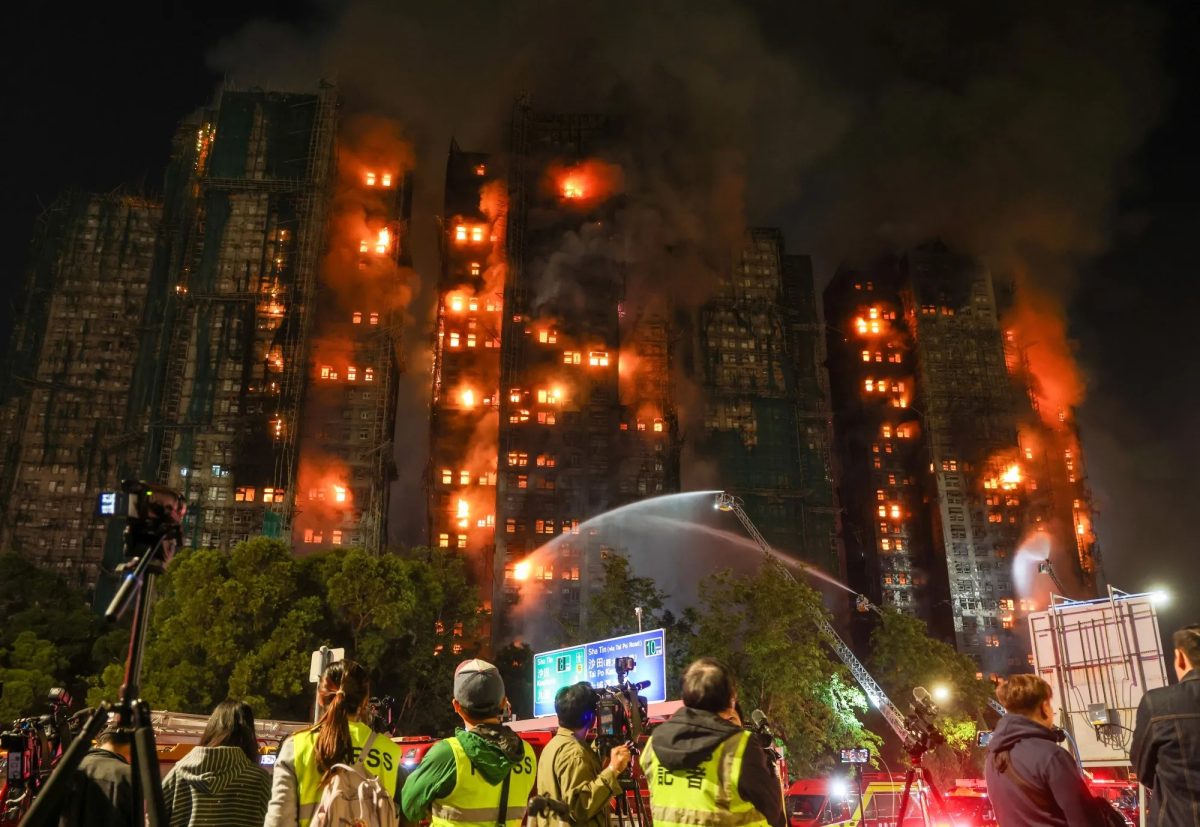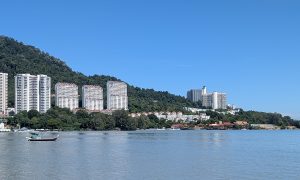A major fire tore through a public housing estate in Tai Po on Wednesday afternoon (November 26), leaving at least 44 dead, hundreds unaccounted for, and investigators examining whether external scaffolding and renovation materials helped spread the flames. Rescue operations and a criminal probe are still ongoing.
A fast-moving fire broke out in the Wang Fuk Court public housing complex in Tai Po in the mid-afternoon of November 26, quickly escalating into a five-alarm emergency that drew hundreds of firefighters and dozens of appliances. Flames swept across bamboo scaffolding and protective mesh that had encircled several towers undergoing renovation, sending dense smoke across the skyline and forcing mass evacuations. Initial rescue efforts continued into the night as crews searched apartments and made repeated attempts to reach people reported trapped inside.

Officials have repeatedly revised casualty figures as recovery and identification work proceeds. By late updates the death toll had climbed into the dozens, with authorities reporting scores of injured and several hundred people listed as unaccounted for as emergency operations continued. The scale of displacement is large — thousands of residents live across the estate’s towers — and makes family reunification and casualty accounting especially difficult.
Attention has focused on the external bamboo scaffolding and the green safety nets used during renovation work. Fire investigators and police have said the blaze may have spread externally along the scaffolding, and local reports suggest some of the covering materials might not have been fire-resistant. The government has opened a criminal inquiry and police arrested three men on suspicion of manslaughter as part of an effort to determine whether negligence or illegal practices played a role. Officials cautioned that investigations are at an early stage and that forensic work will be slow and painstaking.
Firefighters faced fierce conditions — high internal temperatures, falling debris, and treacherous scaffolding — that impeded access to some floors and delayed search teams. Authorities raised the alarm to the highest level, mobilizing large numbers of crews and specialist equipment. Hospitals reported large influxes of injured residents, including people with severe burns and smoke inhalation, while temporary shelters were set up for displaced families. City leaders pledged support for victims and vowed a full investigation into building safety and permitting for ongoing repairs.
The fire has reignited concern about maintenance practices, the safety of temporary scaffolding, and regulatory oversight in densely built parts of the city. Wang Fuk Court is a subsidized, high-density estate with thousands of residents; it was under large-scale exterior repair works prior to the blaze. The disaster has drawn comparisons with past deadly fires in Hong Kong and prompted calls from safety advocates and lawmakers for stricter controls on construction materials, improved evacuation procedures, and clearer accountability for repair contractors and owners’ corporations.

WHAT HAPPENS NEXT
In the short term, authorities will continue search, rescue, and identification work while prioritizing medical care and temporary housing for survivors. The criminal investigation will run in parallel with safety inspections and a review of repair contracts and materials. For many residents and families, answers are the immediate priority — why the blaze spread so quickly, whether warnings had been missed, and who is legally responsible. Longer term, the crisis is likely to prompt policy reviews about renovation safety and fire risk management across Hong Kong’s ageing high-rise stock.
Sources: Reuters, South China Morning Post, Al Jazeera, The Guardian





















